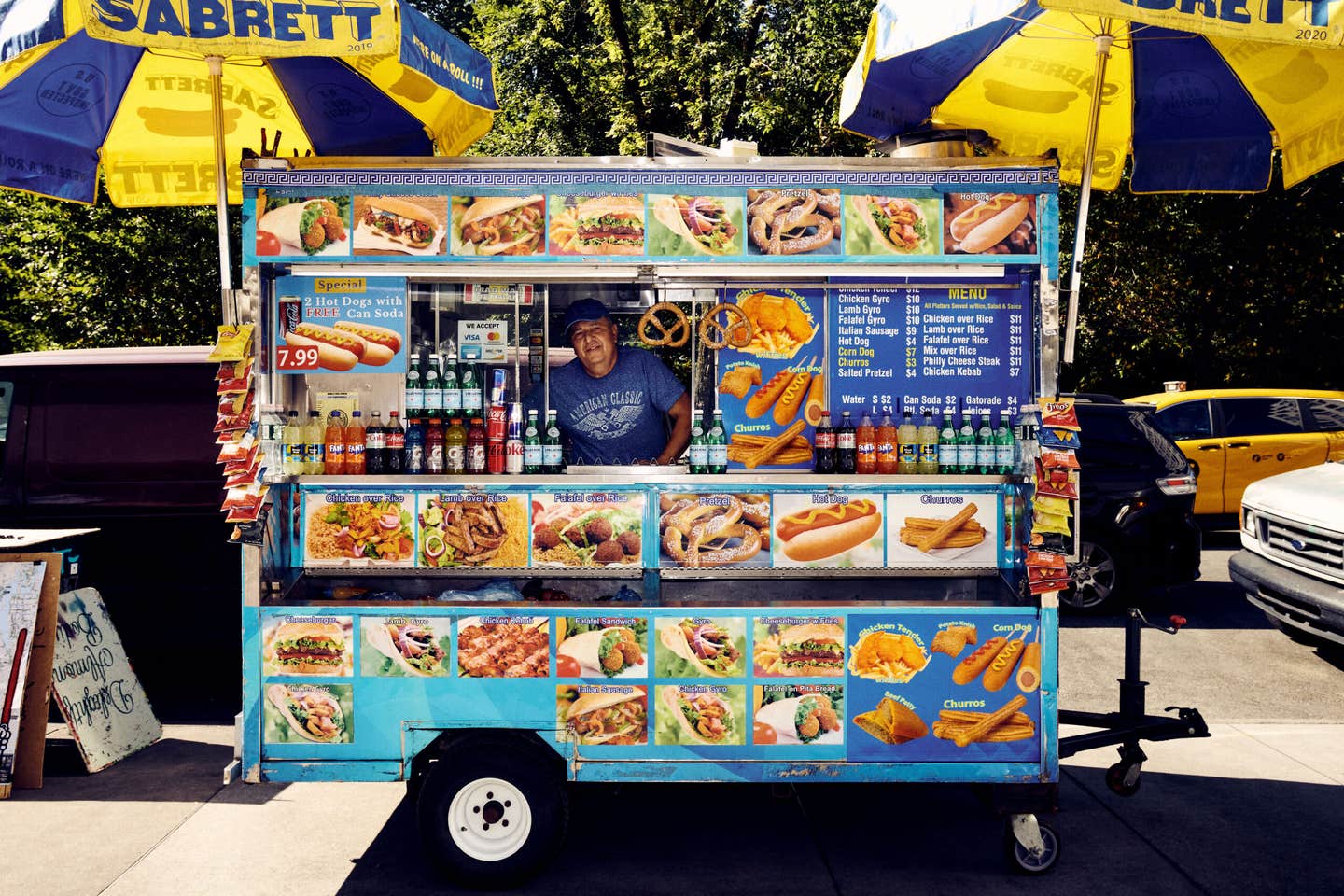In New Mexico, You Can’t Have a Breakfast Burrito Without This Star Ingredient
The state’s prized roasted chiles are nonnegotiable.
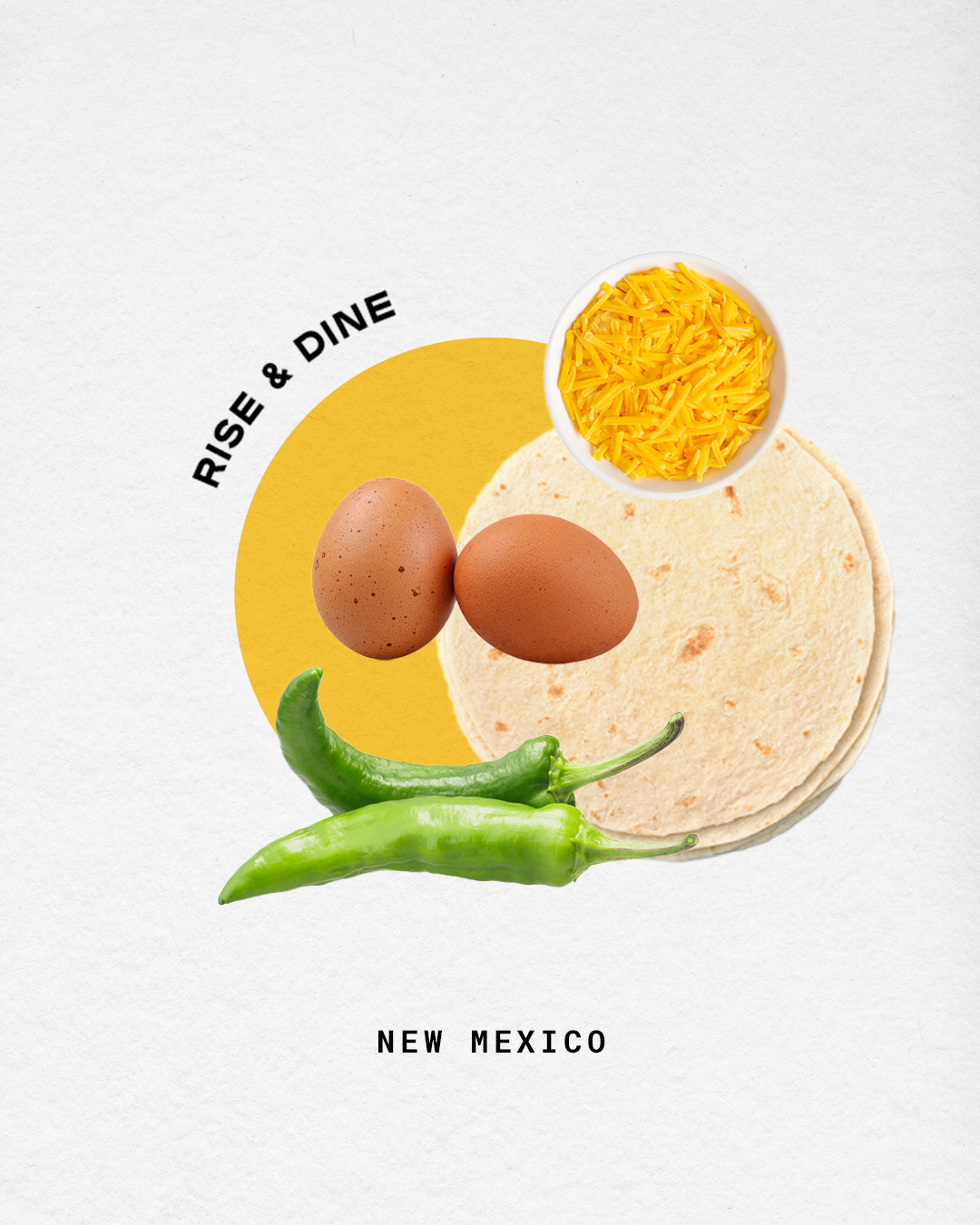
Rise & Dine is a SAVEUR column by Senior Editor Megan Zhang, an aspiring early riser who seeks to explore the culture of mornings and rituals of breakfast around the world.
Israel Rivera tasted his first New Mexico chile pepper when he was a high school freshman growing up in Albuquerque. He thought he knew chiles—his Mexican parents made all kinds of salsas at home—but the ones wrapped inside this five-dollar strip-mall breakfast burrito were different. Roasted, earthy, and a tad sweet, these green chiles had a depth of flavor unlike anything his 14-year-old self had ever experienced. “From then on, it was green chile on everything all the time,” he recalls. “To say it was life-changing sounds kind of dramatic, but it was.”
People in New Mexico have been rolling breakfast burritos for decades—at least since the 1970s, when it’s believed Santa Fe restaurant Tia Sophia’s first coined the term on its menu. Every eatery makes the dish a little differently, but certain ingredients, like a flour tortilla and fluffy scrambled eggs, are standard. Potatoes might be shredded or cubed. Cheese is often cheddar or a cheddar-Jack blend, but some cooks swap in cotija or queso fresco. Bacon is typical, though meats like sausage and carne adovada (pork stewed with chiles) are also popular. But the absolute non-negotiable—without which a burrito can’t be considered New Mexican, says Rivera, who now serves the item at his Albuquerque restaurant The Shop Breakfast & Lunch—is New Mexico chiles, roasted to charred perfection.
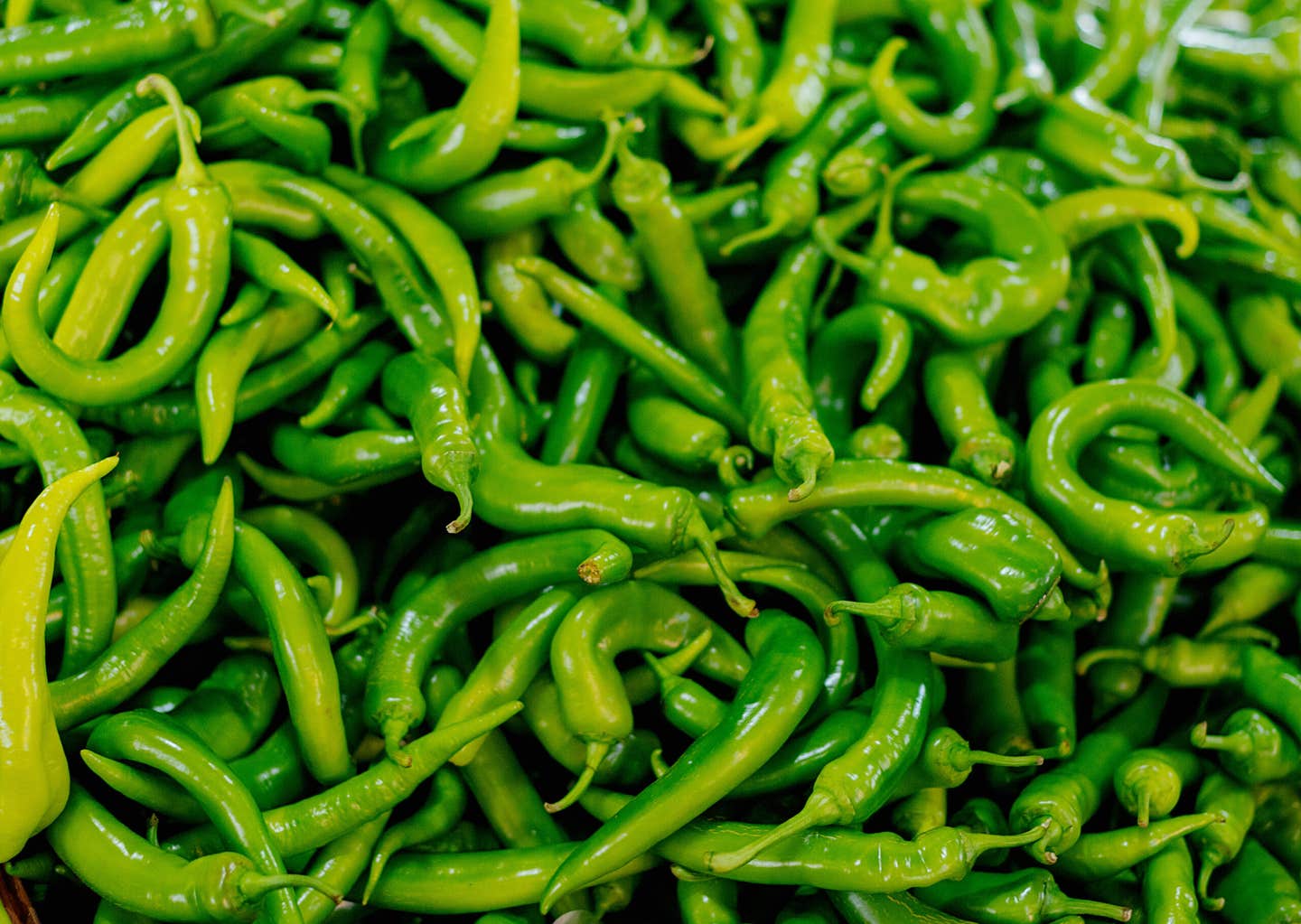
Skinny, long, and a little wrinkly, the state’s chiles are a prized cornerstone of the New Mexican kitchen. “Pueblo Native Americans are at the heart of the story of these chiles,” says Santa Fe-based chef and food columnist Marianne Sundquist, explaining that Indigenous communities have been cultivating peppers in the Southwest for centuries. The ingredient thrives in New Mexico, where the crop has adapted to the arid Southwest environment’s abundant sunshine and cool nights, explains Danise Coon, a senior research specialist at New Mexico State University’s Agricultural Experiment Station. In the early 1900s, university horticulturist Fabián Garciá pioneered a new hybrid cultivar with milder heat, improved resistance to disease and drought, and skins that were easier to peel when roasted. Dubbed the “New Mexico No. 9,” it was a commercial success, embedding the hybrid into the state’s culture—and into its burritos.
Compared to most spicy peppers, New Mexican chiles are bigger and fleshier, so they stand up well to roasting—which is the fate that awaits the majority of the crop. When harvest season rolls around, usually in late August or September, the air across the state is thick with the sweet, smoky smell of roasting chiles. “I always joke that if someone were to bottle that scent into a perfume, I would wear it every day,” Sundquist says with a laugh. The cooking process not only intensifies the acidity and heat of the peppers, but it also gives them a nutty quality and mildly bitter edge. “We find roasted green chiles necessary in most of our foods,” Rivera notes. New Mexicans purée them into soups, smother enchiladas with them, tuck them into burgers, and fry them into chiles rellenos. “It’s our way of adding umaminess to any dish,” he tells me. “We’re just so in love with that flavor.”
This devotion to New Mexico chiles, coupled with their short harvest window, means locals are willing to go to great lengths to stock up. Just ask Eric See, the New Mexico native behind the Brooklyn breakfast-burrito joint Ursula. As farmers pluck the year’s first crop, See flies into Albuquerque, rents a minivan, and drives down to the family farm Homegrown Market in Deming with his dad to load up the car with chiles. Then, he leans on the accelerator the whole drive back to Brooklyn, blasting the AC to keep each bushel as cold and fresh as possible.
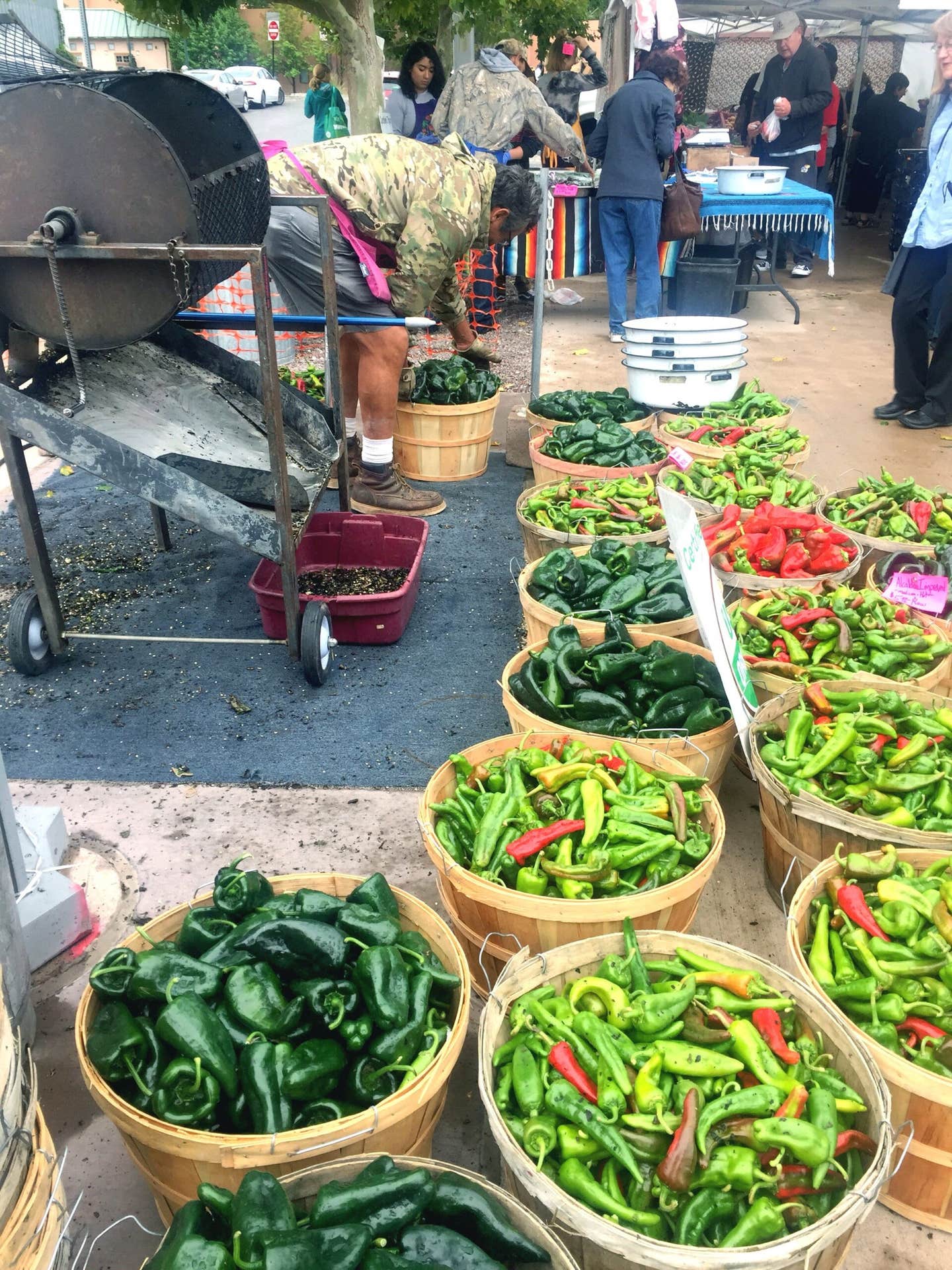
During harvest season, people selling peppers—whether on farms, in grocery stores, or from burlap bags on the side of the road—often roast them for buyers at the source. “My mom would go to the farms and bring back giant trash bags full of roasted chiles,” See recalls. But now that he’s rolling burritos all the way out in Brooklyn, he opts to do the job himself once a year, to immerse his customers in what he calls a “transportive culinary and cultural experience.” This means setting up metal barrel roasters and propane tanks that need to be supervised constantly and rotated by hand. The end result, he insists, is worth all the extra effort: “One bite, and it’s like I’m back home.”
After all, it’s New Mexico that gives the famous chiles their unique flavor. There’s even a law, the New Mexico Chile Advertising Act, that forbids labeling or selling products as New Mexico chiles unless they were grown in the state—a move that Coon says “protects the identity and preserves the uniqueness” of the chiles. “Plant the seeds anywhere else, and they won’t have the same climate or environment, so they’re going to taste different,” adds Lois Ellen Frank, a New Mexico-based culinary anthropologist and author of the cookbook Seed to Plate, Soil to Sky. Even within the state, different regions have varying elevations and soil compositions, which lead to divergence in flavor. “It’s similar to the way we think about terroir for grapes,” adds See, noting that many would consider Hatch—a village in southern New Mexico that’s become synonymous with the peppers grown there—to be “the Napa of chiles.”
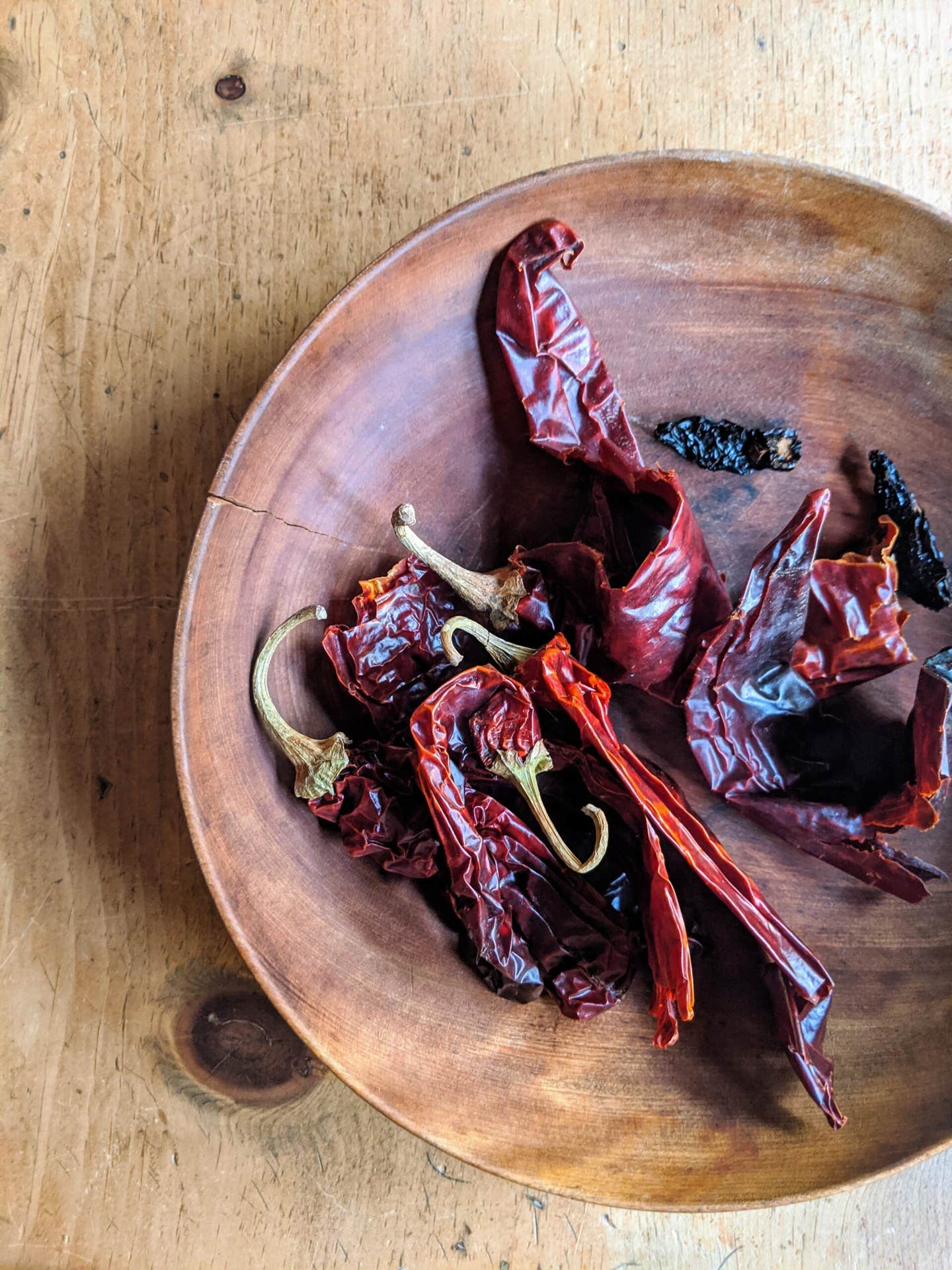
Growing up in California, I devoured many breakfast burritos, not realizing that New Mexico’s were something else entirely. Several years ago, while passing through Albuquerque on a road trip, I ordered one at the restaurant Papa Frank’s and received the question, “Red or green?” Seeing my blank stare, the server explained that they could smother my burrito in either red or green chile sauce (the query is the official state question). The two types, I learned later, are in fact made from the same chile: “Green is the immature fruit, and it turns red when it’s left to ripen on the vine,” Frank explains. Green has more tart, citrusy notes, she adds, while red has earthy, even chocolatey, cherry-like undertones. There’s also a third answer to the state question: “Christmas style,” a best-of-both-worlds burrito half-drenched in green, half in red.
To Rivera, New Mexico’s iconic breakfast burrito embodies the unique culture of the state. Flour arrived with the Spanish, he points out, while tortillas and chiles have roots in Native American and Mexican cooking, both of which have deeply shaped the Land of Enchantment’s food traditions.
“Yeah, it’s just a burrito,” says Rivera. “But when you break it down into its parts, it’s this beautiful coming together of all the things that make us so special here.”
Recipe
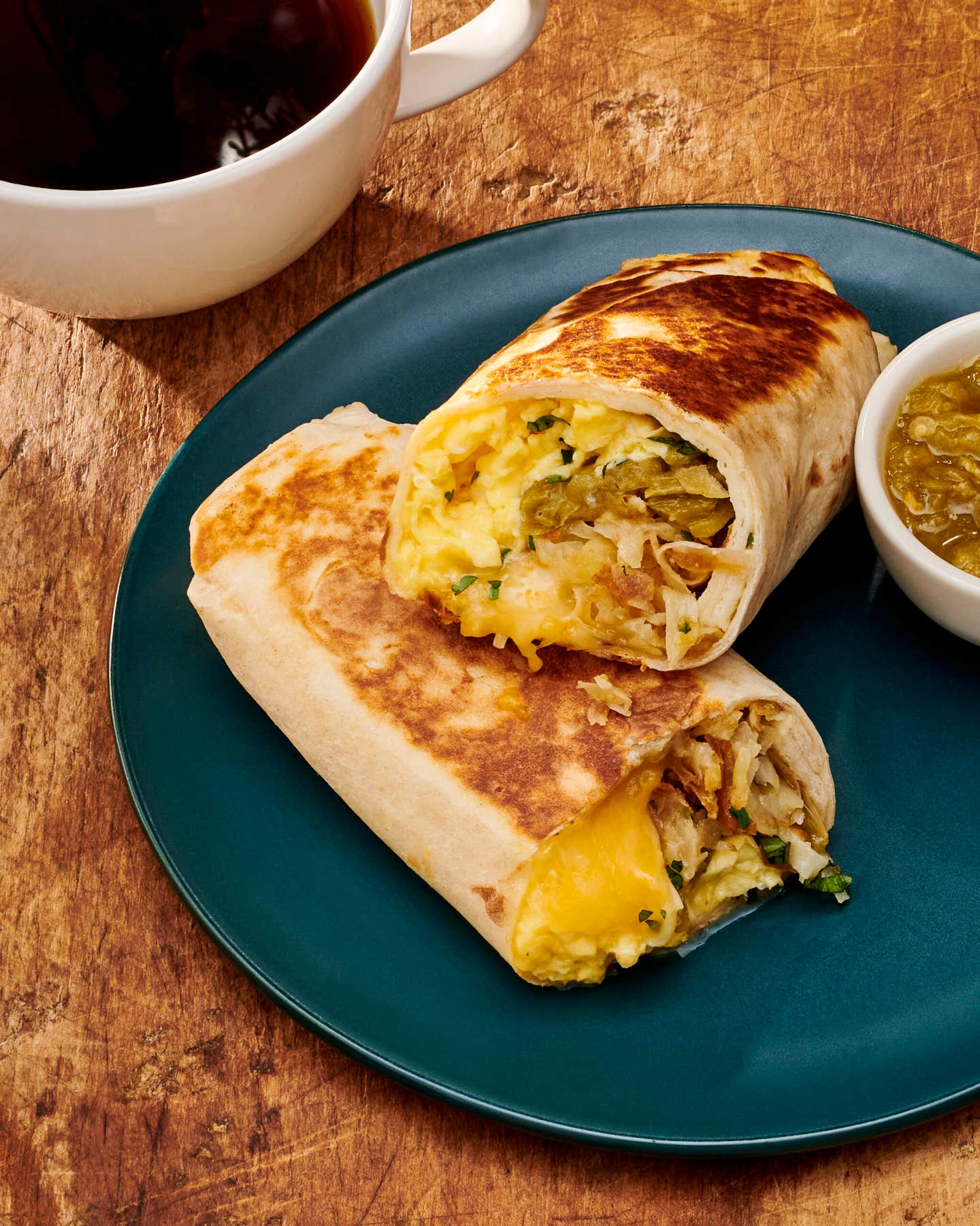
Keep Reading
Continue to Next Story









